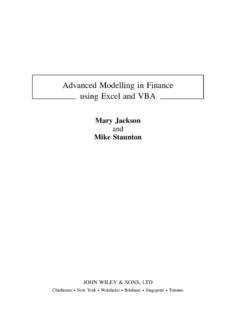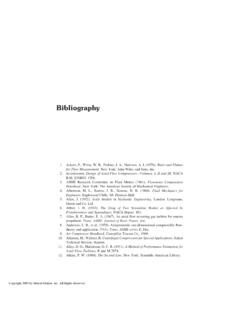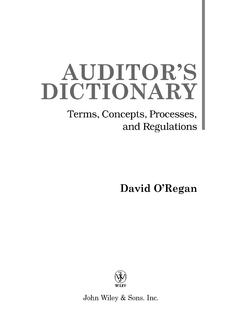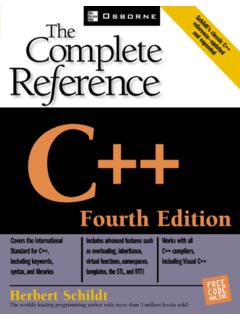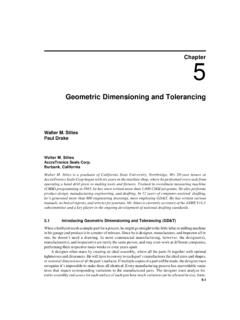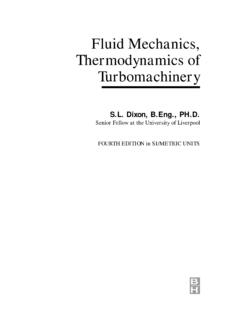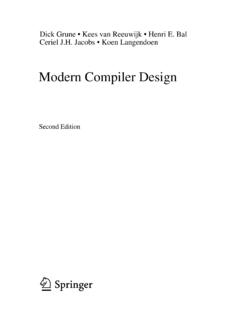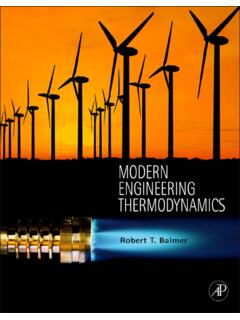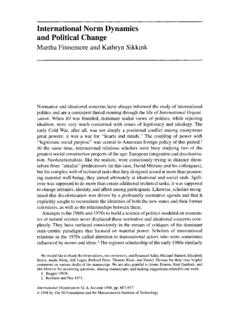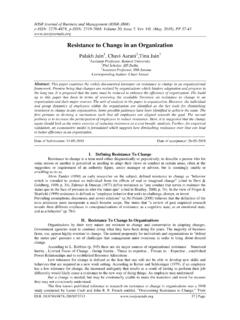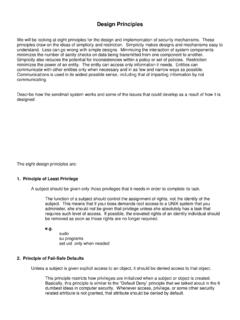Transcription of MACHINES AND MECHANISMS - 160592857366.free.fr
1 MACHINES AND MECHANISMSAPPLIED KINEMATIC ANALYSISF ourth EditionDavid H. MyszkaUniversity of DaytonPrentice HallBostonColumbusIndianapolisNew YorkSan FranciscoUpper Saddle RiverAmsterdamCape TownDubaiLondonMadridMilanMunichParisMon trealTorontoDelhiMexico CitySao PauloSydneyHong KongSeoulSingaporeTaipeiTokyoVice President & Editorial Director:Vernon R. AnthonyAcquisitions Editor:David PloskonkaEditorial Assistant:Nancy KestersonDirector of Marketing:David GesellMarketing Manager:Kara ClarkSenior Marketing Coordinator:AliciaWozniakMarketing Assistant: Les RobertsSenior Managing Editor:JoEllen GohrAssociate Managing Editor:Alexandrina Benedicto WolfProduction Editor: Maren L.
2 MillerProject Manager:Susan HannahsArt Director:Jayne ConteCover Designer:Suzanne Behnke Cover Image:FotoliaFull-Service Project Management:Hema Latha, Integra Software Services, Pvt LtdComposition:Integra Software Services, Pvt LtdText Printer/Bindery:Edwards BrothersCover Printer:Lehigh-Phoenix ColorText Font:10/12, MinionCredits and acknowledgments borrowed from other sources and reproduced, withpermission, in this textbook appear on the appropriate page within the text. Unless otherwisestated, all artwork has been provided by the 2012, 2005, 2002, 1999 Pearson Education, Inc., publishing as Prentice Hall,One Lake Street, Upper Saddle River, New Jersey, rights reserved.
3 Manufacturedin the United States of America. This publication is protected by Copyright, and permissionshould be obtained from the publisher prior to any prohibited reproduction, storage in aretrieval system, or transmission in any form or by any means, electronic, mechanical,photocopying, recording, or likewise. To obtain permission(s) to use material from thiswork, please submit a written request to Pearson Education, Inc., Permissions Department,One Lake Street, Upper Saddle River, New Jersey, of the designations by manufacturers and seller to distinguish their products areclaimed as trademarks. Where those designations appear in this book, and the publisher wasaware of a trademark claim, the designations have been printed in initial caps or all of Congress Cataloging-in-Publication DataMyszka, David and MECHANISMS : applied kinematic analysis / David H.
4 Myszka. 4th bibliographical references and : 978-0-13-215780-3 ISBN-10: 0-13-215780-21. Machinery, Kinematics Mechanical '11 dc22201003283910987654321 ISBN 10:0-13-215780-2 ISBN 13: 978-0-13-215780-3 The objective of this book is to provide the techniquesnecessary to study the motion of MACHINES . A focus is placed onthe application of kinematic theories to real-world is intended to bridge the gap between a theoretical study ofkinematics and the application to practical completing a course of study using this book shouldbe able to determine the motion characteristics of a topics presented in this book are critical in machine designprocess as such analyses should be performed on design con-cepts to optimize the motion of a machine fourth edition incorporates much of the feedbackreceived from instructors and students who used the first threeeditions.
5 Some enhancements include a section introducingspecial-purpose MECHANISMS ; expanding the descriptions ofkinematic properties to more precisely define the property;clearly identifying vector quantities through standard boldfacenotation; including timing charts; presenting analyticalsynthesis methods; clarifying the tables describing cam fol-lower motion; and adding a standard table used for selection ofchain pitch. The end-of-chapter problems have been addition, many new problems have been is expected that students using this book will have agood background in technical drawing, college algebra, andtrigonometry.
6 Concepts from elementary calculus arementioned, but a background in calculus is not , knowledge of vectors, mechanics, and computerapplication software, such as spreadsheets, will be , these concepts are also introduced in the approach of applying theoretical developments topractical problems is consistent with the philosophy ofengineering technology programs. This book is primarilyoriented toward mechanical- and manufacturing-relatedengineering technology programs. It can be used in eitherassociate or baccalaureate degree are some distinctive features of this and sketches of machinery that containmechanisms are incorporated throughout the focus is on the application of kinematic theories tocommon and practical graphical techniques and analytical methods areused in the analysis of examination copy of Working Model , a commer-cially available dynamic software package (see Section page 32 for ordering information), is extensively usedin this book.
7 Tutorials and problems that utilize thissoftware are integrated into the for implementing the graphical techniqueson computer-aided design (CAD) systems are includedand illustrated throughout the chapter concludes with at least one case case illustrates a mechanism that is used onindustrial equipment and challenges the student todiscuss the rationale behind the design and static and dynamic mechanism force analysismethods are major concept is followed by an exampleproblem to illustrate the application of the Example Problem begins with an introduction of a real machine that relies on the mechanism end-of-chapter problems are consistentwith the application approach of the text.
8 Everyconcept introduced in the chapter has at least oneassociated problem. Most of these problems includethe machine that relies on the mechanism applicable, end-of-chapter problems areprovided that utilize the analytical methods and arebest suited for programmable devices (calculators,spreadsheets, math software, etc.).Initially, I developed this textbook after teaching mech-anisms for several semesters and noticing that students didnot always see the practical applications of the material. Tothis end, I have grown quite fond of the case study problemsand begin each class with one. The students refer to this asthe mechanism of the day.
9 I find this to be an excellentopportunity to focus attention on operating , it promotes dialogue and creates a learningcommunity in the , the purpose of any textbook is to guide thestudents through a learning experience in an effectivemanner. I sincerely hope that this book will fulfill this inten-tion. I welcome all suggestions and comments and can bereached at thank the reviewers of this text for their comments andsuggestions: Dave Brock, Kalamazoo Valley CommunityCollege; Laura Calswell, University of Cincinnati; CharlesDrake, Ferris State University; Lubambala Kabengela,University of North Carolina at Charlotte; Sung Kim,Piedmont Technical College; Michael J.
10 Rider, OhioNorthern University; and Gerald Weisman, University MyszkaPREFACEiiiCONTENTS1 Introduction to MECHANISMS andKinematics and Gruebler s Actuators and Used Links and Eccentric Pin-in-a-Slot Screw Cases of the Mobility Coincident Exceptions to the Gruebler Idle Degrees of Four-Bar Grashof s Double Double change Point Triple Purpose Straight-Line Parallelogram Quick-Return Scotch Yoke of Mechanism Traditional Drafting CAD Analytical Computer Methods24 Problems25 Case Studies292 Building Computer Models ofMechanisms Using Working Model Software Simulation of


